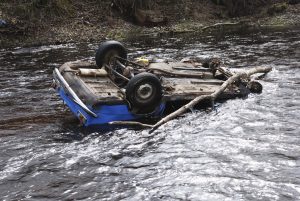Design defects in roadways refer to flaws built into the road’s design—improper slope, missing signage, poor drainage, inadequate intersection layout, etc.—that create a hazardous condition from the start. Negligent roadway design cases differ from negligent roadway maintenance cases (allowing potholes or crumbling asphalt to exist) and are subject to different legal rules. In this post I will explain how you prove a faulty roadway design case, but will also compare such proof to the proof required for negligent roadway maintenance cases.
Legal Hurdles for Defective Roadway Design Cases
Under New York law, municipal entities enjoy qualified immunity with respect to roadway design. To overcome it, plaintiffs must show that the design had “no rational basis” or was “plainly inadequate”, or that the municipality knew of its dangers and failed to correct them in a reasonable time frame Justia+5Central New York Injury Lawyer Blog+5Reddit+5.
Legal Hurdles for Negligent Roadway Maintenance Cases
Do not confuse roadway design cases with negligent roadway maintenance cases. In maintenance cases you don’t have a “qualified immunity” defense to contend with, but you will have other hurdles to clear including (depending on the type of governmental entity who owns and maintains the roadway) a “prior written notice” requirement. Essentially, the prior written notice requirement (which again pertains only to negligent maintenance cases, not negligent design cases) means that you have to prove the municipality had prior written notice of the defect that caused the accident before the accident happened. The main exception to that rule is if you can prove the municipality affirmatively created the defect (rather than the defect having been created by the passage of time).
Building a Strong Road Design Defect or Negligent Maintenance Case
In either type of case, your lawyer must generally take the following steps:
- Determine the relevant entity and serve notices of claims early
If the roadway is owned by a municipality, a Notice of Claim must generally be served within 90 days, with suit filed within 1 year 90 days, or for state-owned roads, you must file either the claim itself, or a notice of intention to file the claim within 90 days. If the notice of intention rather than the claim itself was filed in the 90-day period, the claim itself must later be filed within two years of the accident.
- Gather robust early evidence regarding Liability
- Photographs, measurements, and on‑scene documentation taken promptly help show the defective design’s dangers as it pertains to the accident in question.
- Expert analysis: Civil engineers and accident reconstructionists are crucial to articulate how the design deviates from accepted industry standards and caused the accident Central New York Injury Lawyer Blog.
- Use FOIL or discovery to uncover internal records, correspondence, inspection notes, or DOT memos that might confirm prior warnings or actual work at the location.
- Gather Evidence Regarding “Causation”
Your lawyer (usually with the help of his experts) must show that the defect was a substantial factor in causing the accident, but not necessarily the sole cause. Wikipedia+15Central New York Injury Lawyer Blog+15New York State Unified Court System+15. For example, a driver may have been partially at fault for speeding or for lack of attention while driving, but if a guardrail (now called a “guiderail” by New York State DOT) would have prevented or mitigated the injury, and the guidelines for safe roadway design called for guardrails in that particular stretch of roadway, your case still has a “green light”. A judge or jury will simply “apportion” fault between the driver and the municipal road designer/maintainer. The driver might not get 100% compensation for his injuries and losses, but will at least get the percentage of compensation corresponding to the municipal road-designer’s fault in comparison to his own fault. So if the fault was 30% on the driver and 70% on the municipality, and the jury awards $1,000,000, then the injured driver will get $700,000 in compensation.
Conclusion
Negligent roadway design and maintenance kill and injury thousands of people in New York State every year. Roadway design and roadway maintenance cases feature different defenses which a skilled New York roadway design / maintenance lawyer is equipped to battle on your behalf with the help of qualified experts in the fields of roadway engineering and accident reconstruction. Don’t hesitate to reach out the personal injury law firm of Michaels Bersani Kalabanka, P.C. regarding your roadway design/maintenance case.
Keep safe!
Mike Bersani
Email me at: bersani@mbk-law.com I’d love to hear from you!
Michaels Bersani Kalabanka P.C.
Syracuse NY Personal Injury and Malpractice Lawyers
315-253-3293
 Central New York Injury Lawyer Blog
Central New York Injury Lawyer Blog


